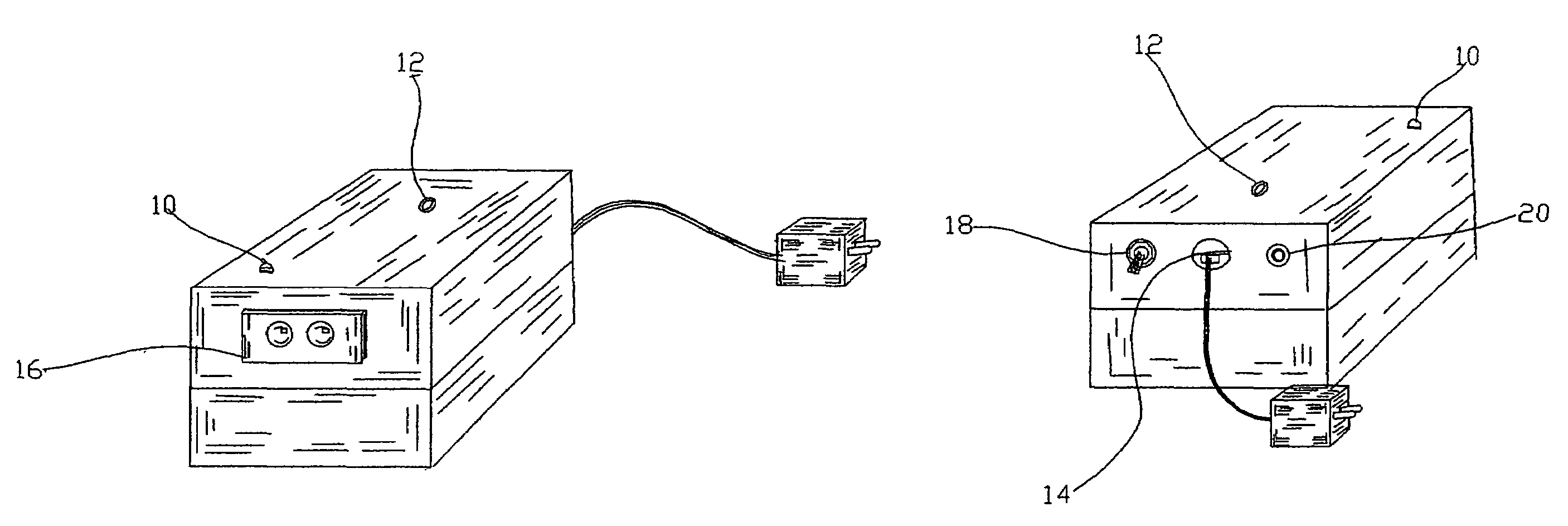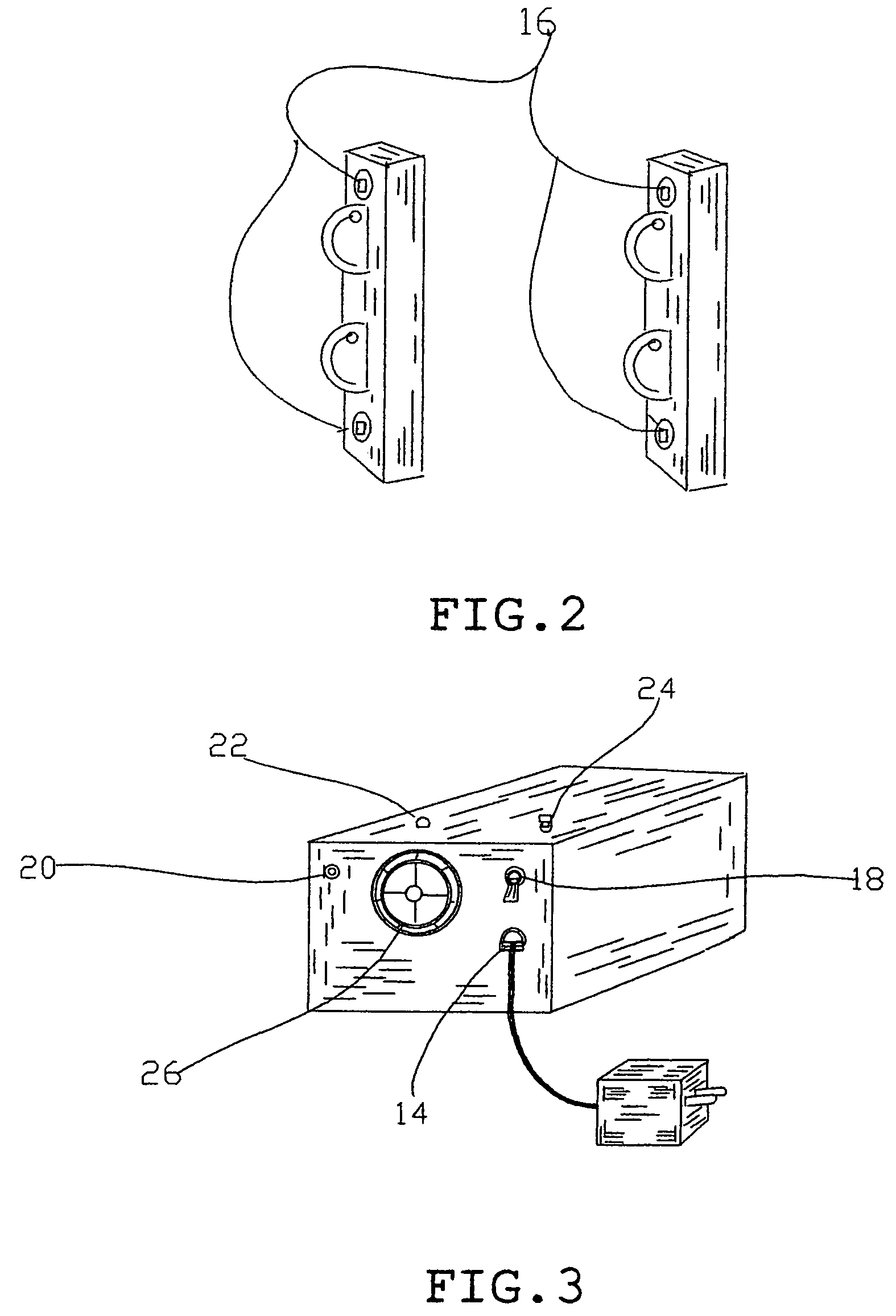Detection warning system for caregivers in a home
a warning system and caregiver technology, applied in the field of detection warning system, can solve the problems of monitoring system, system not designed for home use, and inability to summon nurses
- Summary
- Abstract
- Description
- Claims
- Application Information
AI Technical Summary
Benefits of technology
Problems solved by technology
Method used
Image
Examples
Embodiment Construction
Description—FIGS. 1A and 1B—Preferred Embodiment
[0099]A preferred embodiment of the portable infrared emitter detector base unit of the present invention is illustrated in FIG. 1A and 1B. This portable infrared emitter detector base unit houses an emitter and detector (not shown) within an emitter detector module 58 (FIG. 9) which emits a narrow, infrared beam. This narrow, infrared beam is focused through a lens (FIGS. 1A and 2) onto an external reflector 44 (FIGS. 5, 6, 7 and 8). When the portable infrared emitter detector base unit and external reflector 44 are in proper alignment, alignment light 10 will be illuminated. When the narrow, infrared beam is interrupted, the portable infrared emitter detector base unit senses the narrow, infrared beam has been obstructed which activates a transmitter (not shown) in a transmitter module (FIG. 9) transmitting a pulse modulated signal and a transmit light 12 located in the portable infrared emitter detector base unit. This transmitted p...
PUM
 Login to View More
Login to View More Abstract
Description
Claims
Application Information
 Login to View More
Login to View More - R&D
- Intellectual Property
- Life Sciences
- Materials
- Tech Scout
- Unparalleled Data Quality
- Higher Quality Content
- 60% Fewer Hallucinations
Browse by: Latest US Patents, China's latest patents, Technical Efficacy Thesaurus, Application Domain, Technology Topic, Popular Technical Reports.
© 2025 PatSnap. All rights reserved.Legal|Privacy policy|Modern Slavery Act Transparency Statement|Sitemap|About US| Contact US: help@patsnap.com



